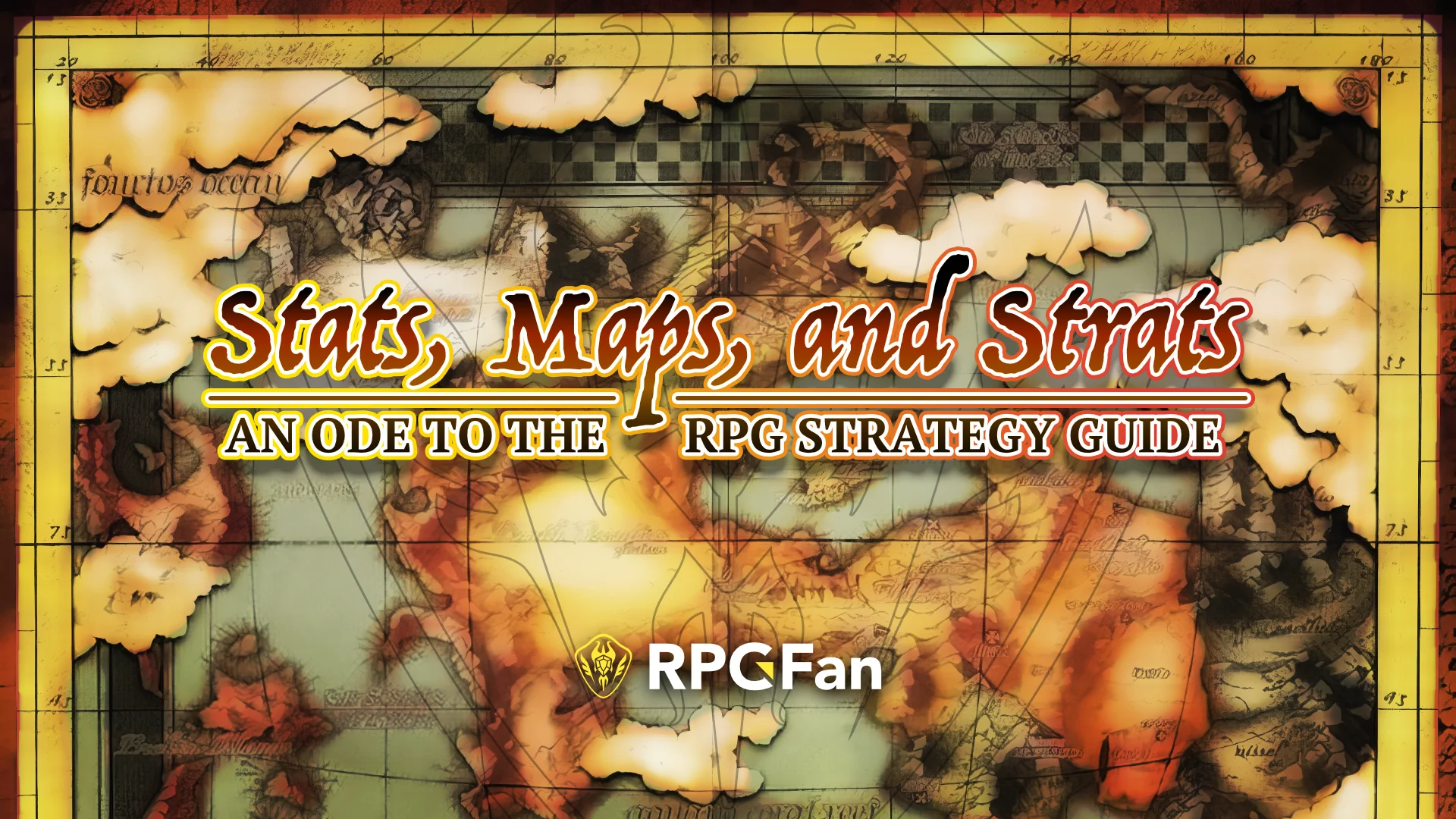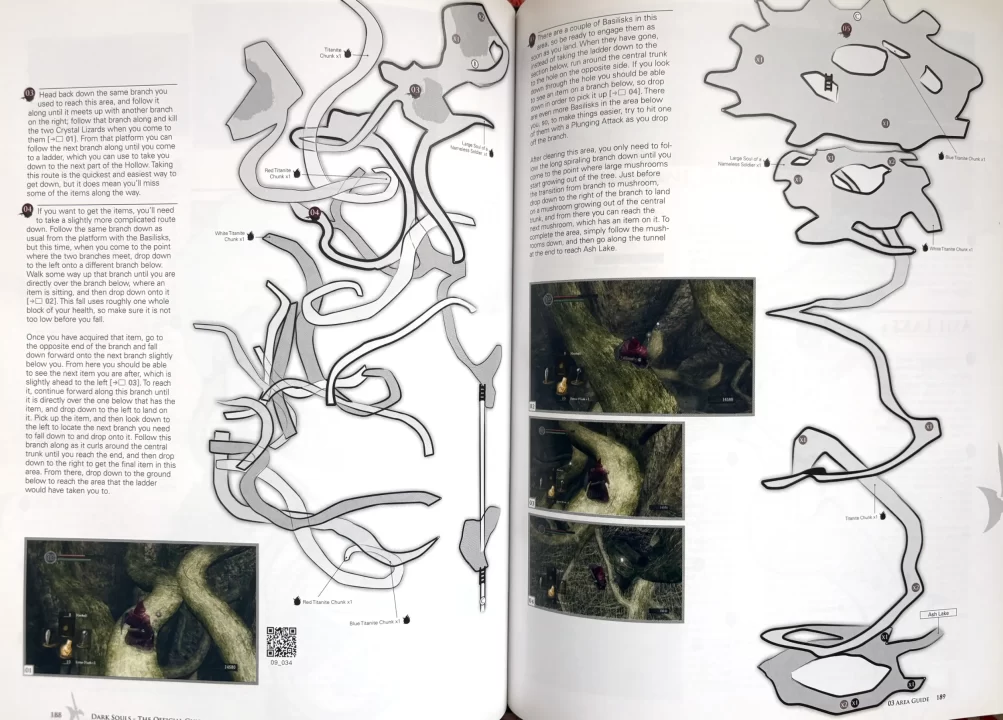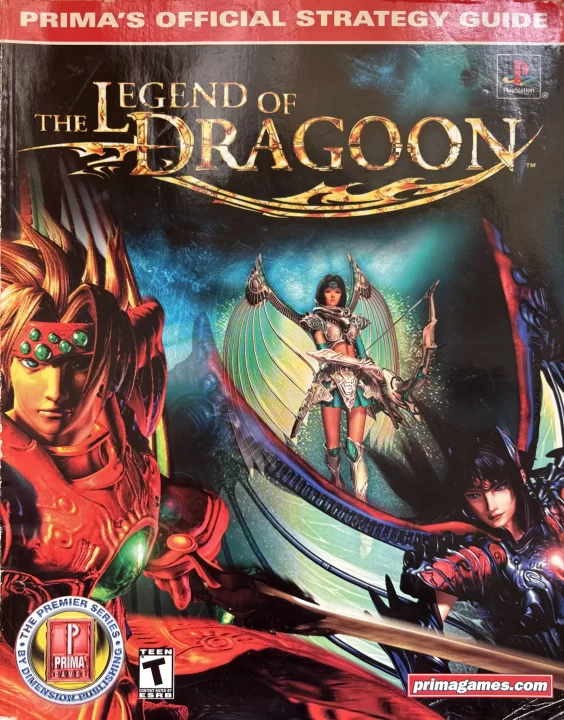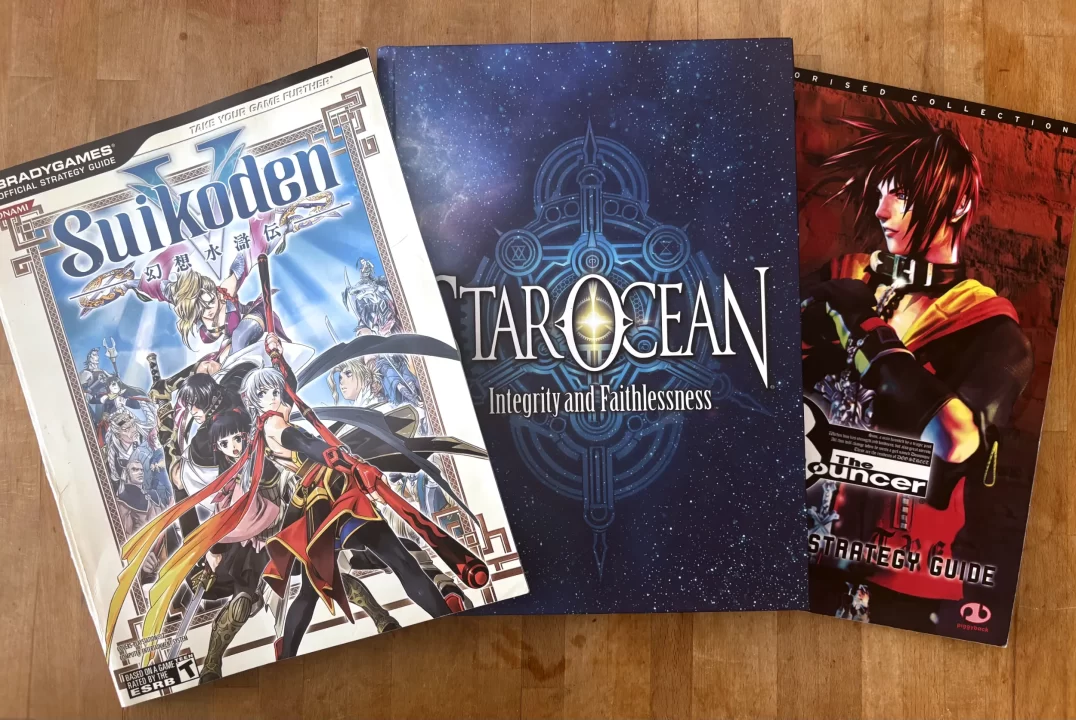I readily admit that I am a collector of things. If a game I’m excited to play has a special edition, I’ll usually buy it. I like buying K-pop music because of the amazing packaging and photo books. If I discover a new band or musician that I really like, I can’t just buy one of their albums—I need them all. I want to experience things I enjoy to the maximum depth possible, often using supplementary material like books and soundtracks. So, it should be no surprise that I’ve amassed a pretty serious collection of RPG strategy guides, which are something of a rarity today but used to be much more commonplace, if not guaranteed. I’m rather proud of my collection of these books, even the ones for games I ended up not being very keen on (I’d usually buy them at the same time as the game), so I thought it was about time to show them some appreciation.
My collection stretches back to the PS1, with some of my oldest being Final Fantasy VII, Vandal Hearts II, and The Legend of Dragoon, up to present day, with the Elden Ring collection and Armored Core VI being my latest additions. However, strategy guides are not all made equal: the overall guide quality, including its images, layout, maps, text quality (typos, errors, etc.), all depend on A, the guide’s publisher, and B, the budget and production time. It’s fair to say I have extremely high-quality strategy guides and some rather poor ones. Back in the ’90s, it was even possible to purchase walkthroughs for games in magazine form. I lament the fact that I do not have my magazine walkthroughs for Pokémon Gold & Silver or Final Fantasy VII and VIII, which actually came as a 2-in-1 guide you could purchase from a local newsagent, just like any other gaming magazine. It was great that these were so readily available and all for the cost of a regular magazine.
Now, let’s take a journey through some of my favourite (and notable) strategy guides by looking at their key elements, including the amazing artwork, map design, and walkthroughs, while discussing the importance of these guides and why I love them so much.
Maps & Wayfinding
I find there’s nothing quite like a good map. Studying them in a strategy guide almost feels like you’re holding a treasure map to another world; taking on the role of navigator, it helps my gaming adventure feel more immersive, especially for games that have large, complex areas that are tricky to navigate or easy to get lost in—games like the Dark Souls trilogy. Frustratingly, I find the maps in the FuturePress guides to be victims of style over substance. The brushwork/hand-painted style of the maps makes them look cool and in keeping with the games’ aesthetic, but unfortunately, it often makes them difficult to read and sometimes almost impenetrable. Check out the image of the Great Hollow, one of the most baffling maps in the Dark Souls guide below:
Good luck trying to navigate anything with this. I understand this area is meant to be very maze-like, but trying to use one of these maps would probably make this location even more infuriating to play through. A requirement of maps in general is accuracy and legibility—which floor am I on? Which direction am I facing? Which direction do I go to follow the safest path? Unfortunately, many of the maps in the Dark Souls guide can’t help you answer those questions with any confidence.
In contrast to the Dark Souls maps, Piggyback’s Final Fantasy XIII guide is the complete opposite. Dark Souls is full of complex areas and it is understandable that players would want a map highlighting the correct route and locations of goodies. Final Fantasy XIII, however, famed for its extreme and controversial linearity (similar to Final Fantasy X…. don’t get me started), is a game that you might think doesn’t really require an in-depth set of maps. You’d mainly be correct, too: the maps highlight the simplicity of the game’s world. Sure, the guide also marks item locations, but it’s essentially page after page of corridor maps that feel rather odd to look at. It’s a good thing then, that the rest of the guide is Piggyback’s usual top quality, with in-depth strategy, tons of detail about paradigms, character development through the Crystarium, and helpful information on each weapon you can acquire. I feel this is an example of how, sometimes, maybe a game doesn’t require all of the typical elements in its guide.
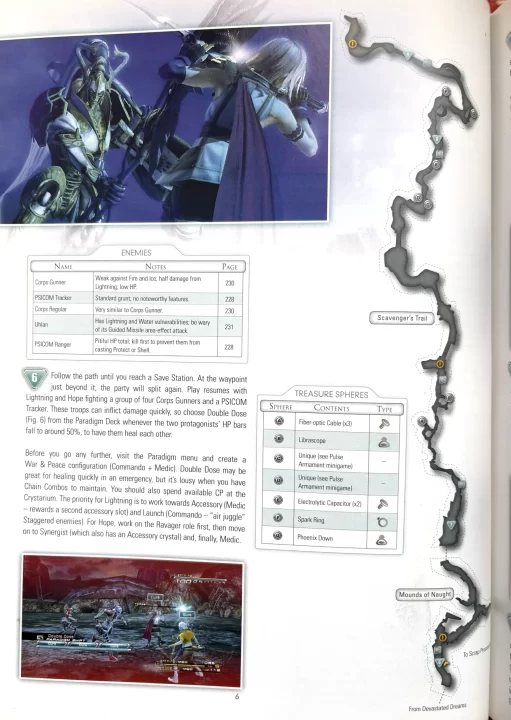
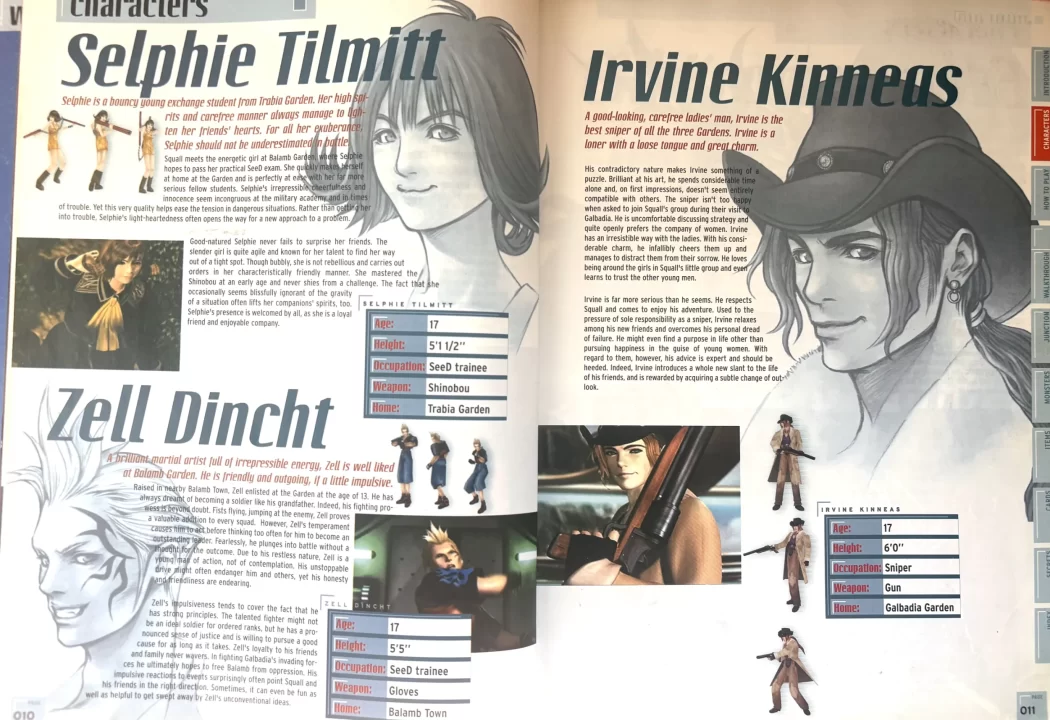
Artwork
One of my favourite things about a decent strategy guide is the artwork and imagery from its respective game, particularly with higher-quality guides that often include concept art. As an artist myself, it’s hardly surprising that I enjoy this as much as I do, and that I can spend hours just flicking through a guide and looking at the beautiful and inspiring imagery. My Final Fantasy VIII guide, published by Piggyback, contains some of Tetsuya Nomura’s original designs for all of the key characters, including non-party members. I credit this guide with getting me interested in a career as a video game character designer or concept artist; for a while in my late teens, I seriously considered using my drawing skills in this way, and being exposed to game art in guides was a key part of why.
The Final Fantasy guides generally are some of the best for showing off character and location art. I particularly appreciate seeing Nomura’s drawing of Edea, which contains more detail than you can see on her in-game model, and of Zell and Selphie—my two favourite Final Fantasy VIII characters. With the original version of FFVIII, the character faces were very pixelated, and while a step-up over the models from VII, still lacked detail. Seeing each character drawn in this way helped me to fully form them in my mind and gave them a deeper sense of humanity, like Nomura had created portraits of real people.
Building on my point from the “Maps” section, a strategy guide can allow a game world to become even more real in your mind, especially with older games where the graphical quality was not as good as it is today. Characters can become real people, cities can become real locations elsewhere in the universe, you become more emotionally invested in the story, and for a while, you can be a part of it.
Charts and Stats
I could spend hours poring over stats, charts, data, and the minutiae of weapons and armour. The Elden Ring guides (yes, that is “guides” plural because there is so much detail it had to be split into multiple books) from FuturePress are an absolute dream. If there is anything you need to know about Elden Ring, these guides have the answer somewhere. I’d honestly say the detail and work contained therein set an incredibly high benchmark for other strategy guides going forward. Sure, the walkthrough of the sprawling, content-packed world of the Lands Between is enough reason to get hold of these tomes, but for me, the weapon and armour information was the clincher. Even before I had a copy of the game, I knew that the available number of armaments would be immense, and if someone created a guide, I had to own it. In a game where every stat allocation counts, I like to plan out exactly what I’m aiming for from the get-go, and I can do just that using these books. Each weapon or armour piece has its description, stats/damage figures across all upgrade paths, location, stat requirements to wield, and a high quality image, giving data junkies hours of entertainment.
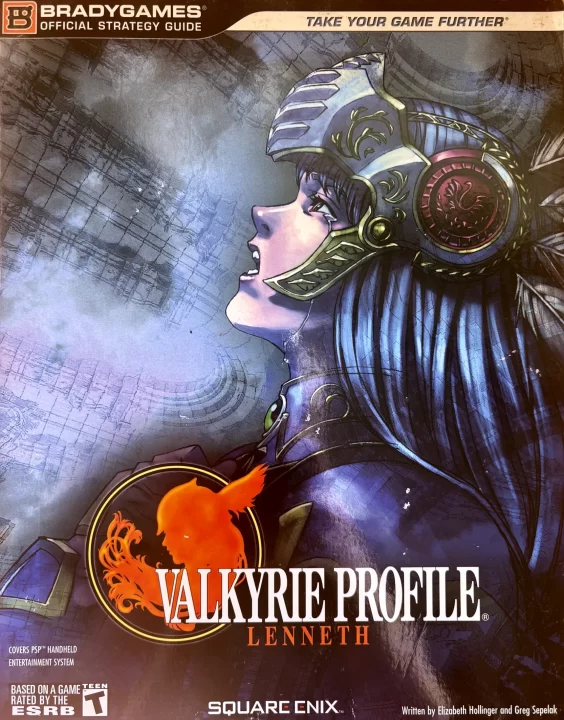
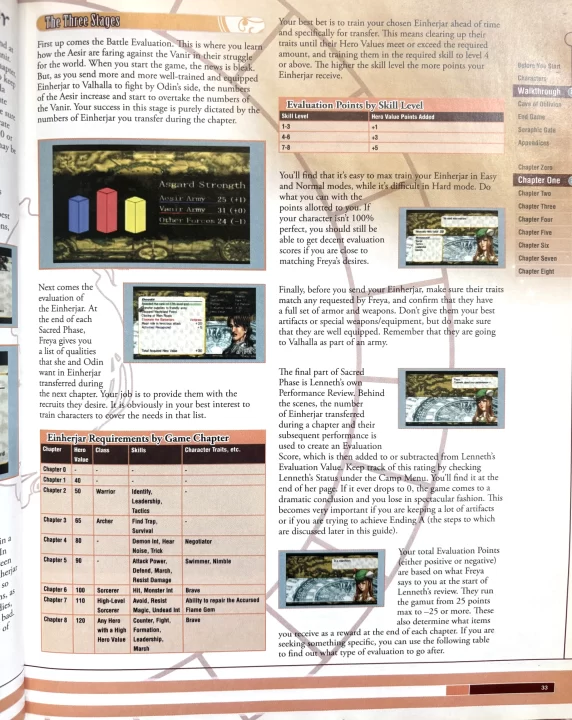
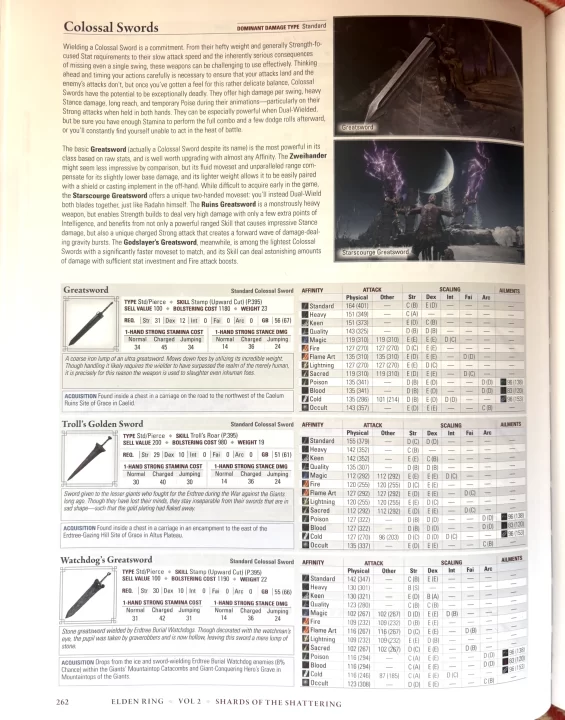
Walkthrough
The bread and butter of any strategy guide is its walkthrough. Without this, most books would be at least half the page count. It’s tough to pick out one single example of a great walkthrough, because almost all of my books do a good job in this regard, often because it’s such a key part of the overall guide.
But to highlight one of my many guides in specific, it has to be Valkyrie Profile: Lenneth, as this is the one that tackles a story that includes strict time limits and where each action in the game requires thought—what should you do next? Which characters are worth keeping in your party and which are not? Which areas are worth spending your time on in a game where time is often not on your side? When a guide tackles subjects like story branches or other key choices required for progression, I always find it nice to have both an objective viewpoint and the author’s personal opinion. Sometimes the objective, often optimal route isn’t always the one you, as the player, want to take. In Valkyrie Profile, you might not want to send your favourite character to Odin, so having that more personal voice can often take you through the viability of other options.
Rare Books
I’m particularly proud of my collection of rare guides, too—either ones that were hard to find at the time (and even harder to find now) or ones for games which have become cult classics. For most people, The Legend of Dragoon is a love-it-or-hate-it game that has developed a passionate fanbase of which I’d count myself a member. While I do think the game is certainly not without its annoyances, it has a lot going for it.
However, the same can’t be said for Prima’s official strategy guide. I always got the impression Prima’s guides were rushed and compiled on a tight budget, as they generally seem to be the least detailed and most error-filled. I was thrilled to get a copy when I bought the game in the ’90s, and also to have kept hold of it all these years—but its usefulness is definitely limited. This guide is the definition of bare-bones. No maps at all, anywhere, despite the game’s many annoying dungeons, and barely any description letting you know where to go next or offering any depth or detail to the story or walkthrough. In fact, the amount of text overall is minimal, which is baffling considering how much empty space there is on each page. The best thing about this guide is the CG artwork and the information on each character’s stats and additions. It’s also the only one I own that gives a full blow-by-blow of the author’s final boss fight, detailing which moves each character and the boss used and how much damage was done/healed. This is a great idea and something I wish more guides would include. Sure, it takes all of the mystery away from the fight (though you can easily ignore it), but it’s really helpful for people who like to plan and ensure they’re strong enough and have enough time to complete the fight.
In contrast to the Legend of Dragoon guide, the one for The Bouncer, Square’s PS2 brawler/RPG hybrid has so much detail for a game that doesn’t really require it. The level design and general gameplay of The Bouncer are so simple. There are no puzzles, maps are generally one directional paths with no choices to make, and no conversation options. It’s basically a playable movie where you fight a bunch of enemies. I was surprised this game had a guide at all. I obviously bought it anyway, mainly because I was super into the character designs and wanted to see more of that art, which the guide is pretty good for. Sion Barzahd and Co. had some really fresh designs that, particularly at the time, felt like an exciting new direction for Square. However, this is a rare instance where I feel the guide can actually complicate the game rather than make it easier.
Suikoden V, one of my favourite games of that series, has a top-notch BradyGames guide that contains everything you’d need to know about the game: a detailed walkthrough and strategy for each chapter and boss and, most importantly, information on every single recruitable character (including the ones who don’t participate in battle) and how to get them. There’s also some great high-quality art in this guide. It’s guides like this one that made BradyGames some of the best and most reliable guides you could get, which is probably why they also produced many Final Fantasy guides.
Finally, we turn to a guide that I was surprised even got made: Star Ocean: Integrity and Faithlessness. Now, I could understand why Star Ocean: Till the End of Time and The Last Hope both received official strategy guides — the series was very much at its peak between the second and third games, and the fourth was still riding that wave, even if The Last Hope was generally not as well-liked. But after the rather lukewarm reception to SO4 and the very long gap between that and Integrity and Faithlessness, it felt like much of the series’ momentum was gone. Even the game itself was somewhat of a surprise, so when I saw there was an official guide, I knew I needed to get a copy before they disappeared. The book itself is certainly not bad — I’ve got worse guides for sure — and it’s great for locating the side quests that sporadically pop up throughout the main story. SO3 and 4 are huge games that fully warrant a strategy guide each, and theirs are both great. I question whether SO5 needed a guide, considering how small the game world is and how much forced backtracking there is, but I’m still happy to have it in my collection and absolutely got some use out of it during my playthrough.
The Future of Strategy Guides
Unfortunately, strategy guides today aren’t produced with anywhere near the level of regularity seen around the turn of the millennium, but they haven’t ceased to exist altogether. FuturePress is keeping them going with high-quality, hardback releases for primarily big-name RPGs, with incredibly detailed and well-written guides for games like Elden Ring, Bloodborne, Metaphor ReFantazio, and Cyberpunk 2077. They often arrive a short while after the game due to the dedication and effort taken by their team, so they function equally as collector’s items for games you love and want to delve deeper into. The FuturePress guides I own are some of the best, most accurate, and beautifully produced in my entire collection, so I sincerely hope they keep up the great work by publishing new guides over the coming years.
I find it a shame that strategy guides are such a rarity these days, not just because I like to find every last secret, missable, and story beat in a game, but also because they activate my imagination in a way that makes a game feel deeper, more whole, even more real. I like my media to be immersive, with various aspects coming together to form a whole experience. Without strategy guides for most of today’s RPG releases, I sometimes feel that experience is just a little less whole than it used to be.

